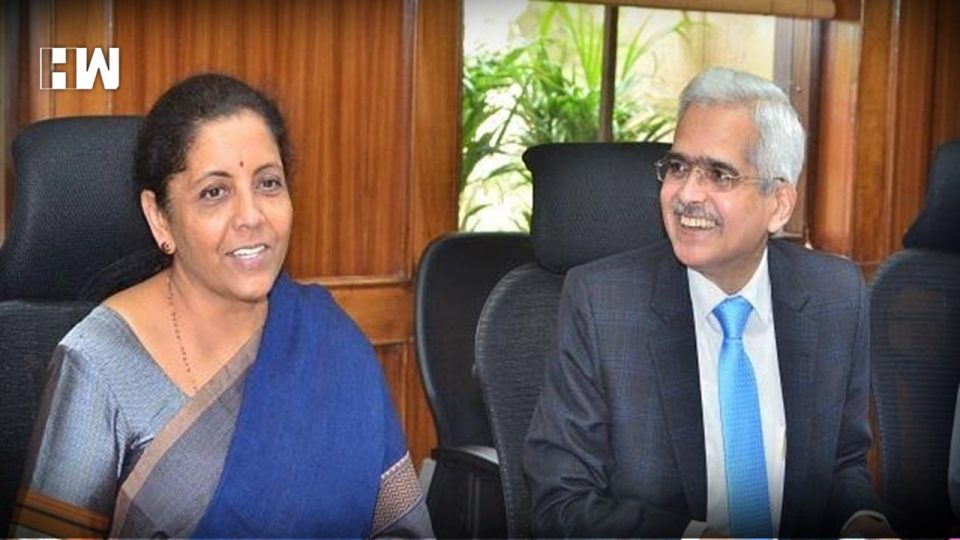The FM has started her pre-budget discussions with a primary focus on reversing the economic slowdown and reviving the economy
Mumbai: The Indian economy continues its slowdown march, without a pause and much as the government mavens like the CEA or the SBI chairman may like us to believe, there are no visible green shoots of recovery so far. In fact, so intense is the prevailing uncertainty and suspense, as to when will this crippling slowdown bottom out, that is yet another recent discussion of four top economists on this subject, the common remarks were, ‘I am not sure, can’t say positively, I doubt it, perhaps, one needs to be a little cautious and that it’s a big question’. The slowdown in the growth rate continues. In its recent MPC meeting, the RBI sharply pruned its GDP growth forecast for FY 2020, from 5.9% to 5%. And now Moody’s, which had earlier changed its India rating outlook from stable to negative, also cut its estimate of India’s GDP growth in the current year, from 5.8% to 4.9%. It said in a statement that India’s growth rate had decelerated as an investment-led slowdown has now broadened into a weakening of consumption, which is an even more serious problem. Moody’s says that financial stress among rural households and sluggish job creation are the key drivers of the slowdown.
The reality is that India’s economic slowdown is not transient and is a deep-rooted one. It gained fast momentum, after the disastrous demonetization three years ago and further got aggravated by the government’s continuous denial of the crisis, for sheer political reasons. What was clearly evident at the ground level and in various reports, was put down and denied by giving bogus data of convenience, as we saw in the case of unemployment and GDP growth too. And again due to a conscious political strategy, the slowdown was recognized only after the BJP’s resounding victory in the May election this year. Since then, without defining the big picture and the overall strategy, a desperate government has announced numerous measures to kickstart economic growth, in a patchy and ad-hoc manner. The government is yet to accept the severity of the problem and has preferred a band-aid approach to cure a serious illness. The government has announced financial relief for the real estate and auto sector, for NBFCs, SMEs, and banks, it has pruned corporate tax rates, hoping to attract fresh investments, it has stepped up its expenditure and has tinkered with labor laws, with the hope that it will energize the industry. At present we are facing a scenario where all key trends are in an adverse direction, whether it be jobs, investment, exports, manufacturing, core sector, consumer spending, bank loans, inflation, GDP growth and confidence in the system.
In the last MPC meeting, the RBI refused to cut interest rates. It took a conscious pause, putting the ball in the FM’s court to announce further measures to revive the economy. The FM has started her pre-budget discussions with a primary focus on reversing the economic slowdown and reviving the economy. The million-dollar question today is as to what is the formula/strategy to be adopted to revive our economy. The answer lies in recognizing that our slowdown is presently due to the trap of no investment, no jobs, no household income and so no consumer spending, thus no investment. While fiscal and monetary measures will give temporary impetus, we need a long term solution to this national crisis. The solution according to us lies in reviving investment in fresh projects and in infrastructure, which is languishing at present because corporates are simply unwilling to risk their capital in such uncertain times. We need to understand the reasons why entrepreneurs are simply not willing to invest.
- Government is the biggest risk factor (stringent laws, complicated and costly compliance, penalty/prosecution and contingent liabilities, also a risk of unstable laws, red tape, and corruption).
- Judiciary and its snail pace, uncertain, expensive justice.
- Flip flop in-laws and regulations.
- Land, labor, construction, judiciary need structural reforms.
- Overall EODB has deteriorated and confidence in the system is missing.
- Resolve the banking crisis to spur lending, and weed out dead assets.
These are measures which will take time to bear fruit and the recovery will be very slow. But till the slowdown is not reversed, the confidence in the economy and the system will continue to worsen and will present as the even bigger crisis to handle.
As an independent media platform, we do not take advertisements from governments and corporate houses. It is you, our readers, who have supported us on our journey to do honest and unbiased journalism. Please contribute, so that we can continue to do the same in future.

